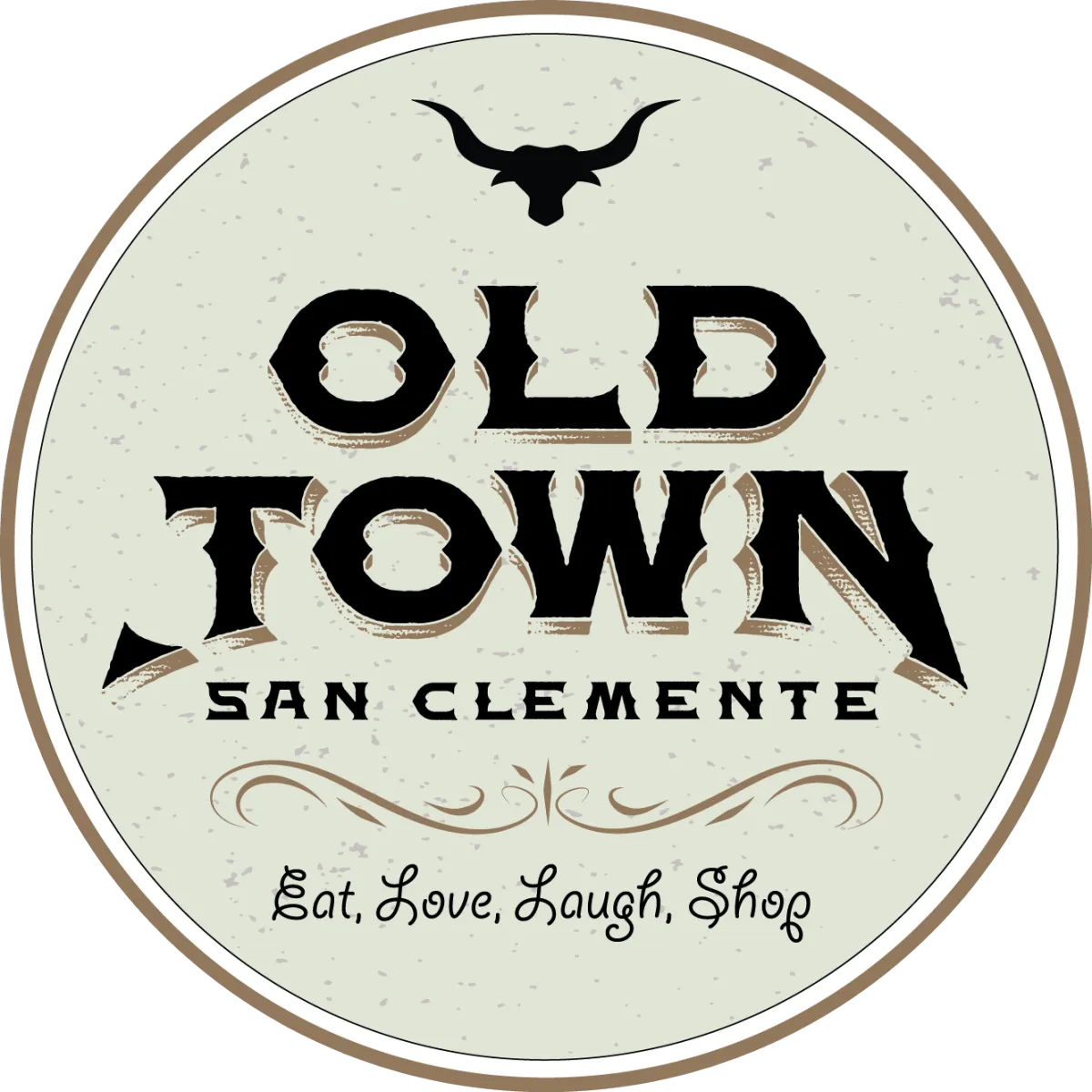Welcome To Your
WAVE ART CLASS!
Can’t wait for the next class to start! This event was so much fun. Saw so much creativity and personality poured onto each board.
-
Coaster class was so much fun!!! This is just a glimpse of the different color combinations available. I get so inspired by all the creativity in each class. If you haven’t signed up for a class what are you waiting for?? Are you signing up?
-
Surf Ghetto Resin was started by Jaclyn and Shane in 2020. It all came about because Jaclyn was looking for a new coffee table and found one she loved, covered in resin, only problem, it was really expensive. So she pitched to the idea to Shane to make one. Luckily, he has years of experience repairing his own surfboards and working with resin and colors.
-
We started off working on little blank circles in her garage to figure out the technique and colors we liked. As this went on, the friendly people passing by in the alley started to take notice. Eventually, so much notice that passersby were asking to buy pieces. Thats when a lightbulb turned on in our heads.
-
Our name came as a hat tip to the surf culture of San Clemente. An ode to the shapers and surfers who made this community by the sea as unique and down to earth as it is.
-We started an Instagram account and slowly gained a following. Eventually getting noticed by local coffee shop, Zebra House Coffee, who pitched the idea of putting our art featured as their artist of the month. We decided to take the offer and invest some money into this opportunity that neither of us had ever seen coming. We built a bunch of pieces, hung them on a Thursday and said a prayer.
What if nothing sold? What if it was laughed at? All these questions passed through our heads. Worst case, we figured our family would all get resin art for Christmas.
We got a call on Sunday that the wall had been nearly cleared out. That process repeated itself over the next couple of weeks and the following grew, the orders grew, our contacts grew.
All thanks to this lovely community we live in for giving us a chance, supporting local and looking out for the little guy. We are so blessed to call San Clemente, CA home.
-We both have regular full time jobs in the hospitality industry and make resin art. Our hope is to share a piece with you and give a reminder of the beach and the peace that it brings us.





Testimonials
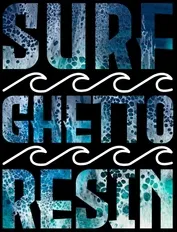

Marcia S.

Absolutely Stunning Artwork!
recently purchased a resin art piece from Surf Ghetto Resin, and I am blown away by the craftsmanship. The colors are vibrant, and the attention to detail is incredible. It arrived securely packaged, and the customer service was excellent. I highly recommend surf ghetto resin for anyone looking for unique and beautiful resin art pieces.



John C.

This was a wonderful class (making resin - ocean) boards. Very informative with a patient instructor! You don't need artistic skills (as I have almost none). This was a lot of fun.
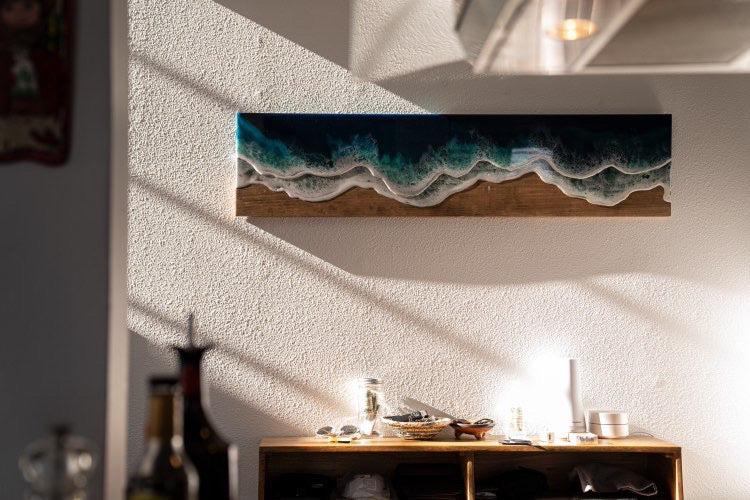


Trisha G.

Participating in the coaster class was an absolute delight! The atmosphere of the class was not only enjoyable but also incredibly inspiring. The level of creativity displayed by everyone in the class was truly impressive, and it fueled my own artistic spirit. Each coaster became a canvas for unique ideas, and the diversity of creative approaches showcased in the class was refreshing. The fun and collaborative nature of the experience made it more than just a learning opportunity; it was a source of inspiration. I left the class with not only a set of beautifully crafted coasters but also a newfound enthusiasm to explore and express my creativity in other artistic endeavors.





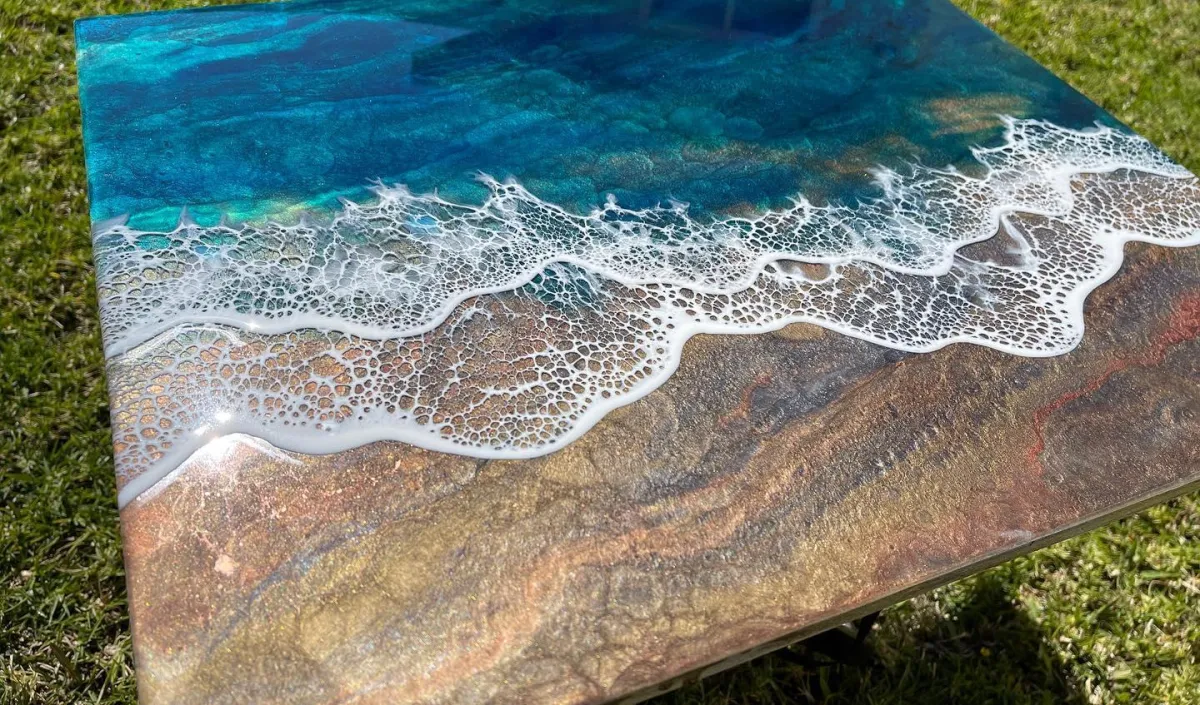










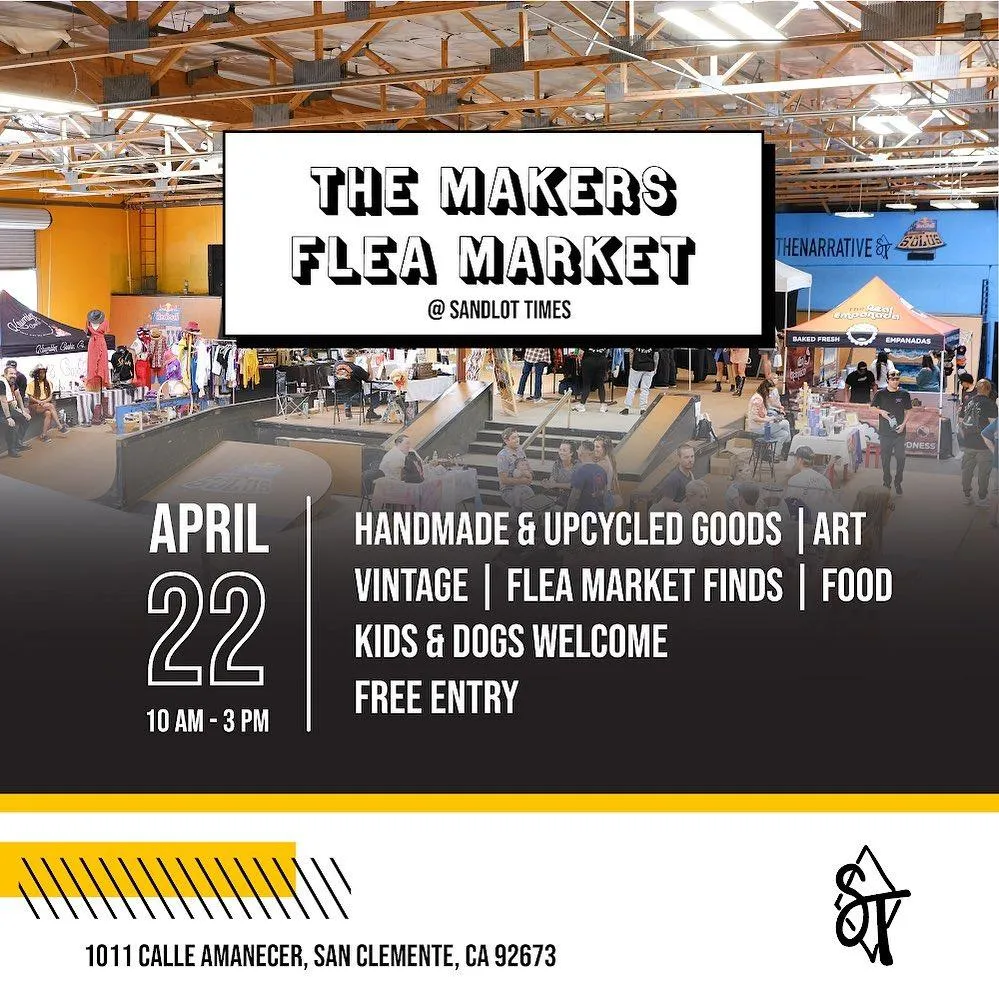




About Wave Art and Resin Painting
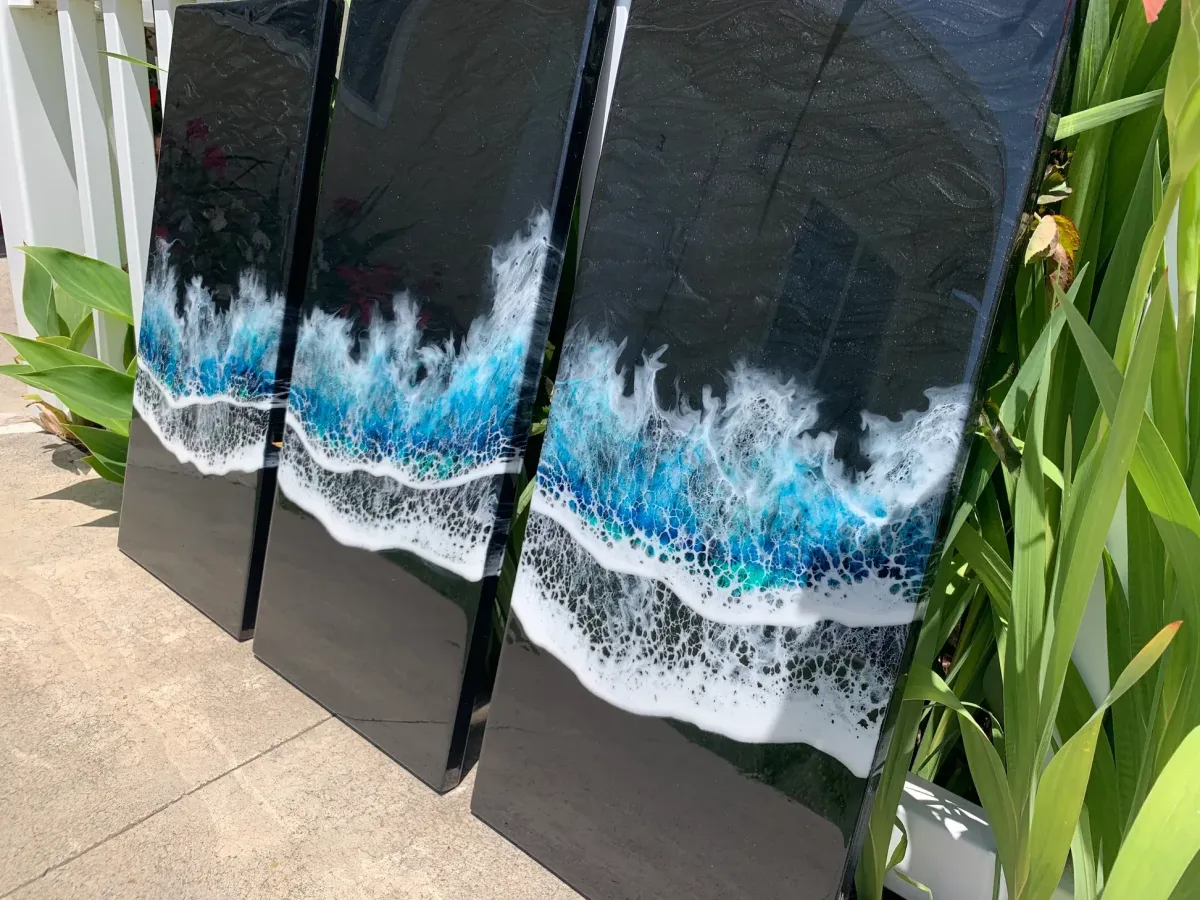

Surf Ghetto Resin is located in
Old Town San Clemente California.
HISTORY
Resin art is a captivating and versatile form of artistic expression that involves working with epoxy resin to create visually stunning pieces. This medium allows artists to craft glossy, glass-like surfaces with a depth that enhances the visual appeal of the artwork. The process typically involves mixing resin with pigments or dyes to achieve vibrant colors, and artists often use various techniques like pouring, swirling, or layering to create unique patterns and textures. Whether it's abstract designs, landscapes, or intricate details, resin art offers endless possibilities. The curing process transforms the liquid resin into a solid, durable finish, resulting in pieces that can be used for decorative purposes, such as coasters, trays, or wall art. The combination of artistic skill, experimentation, and the unpredictable nature of resin makes each creation a one-of-a-kind masterpiece, contributing to the growing popularity of resin art within the creative community.
TODAY
Resin art has surged in popularity today due to its incredible versatility, aesthetic appeal, and widespread influence on social media platforms. Artists and enthusiasts alike are drawn to its glossy, glass-like finish, allowing for vibrant colors and intricate designs. The DIY trend, coupled with the therapeutic benefits of the creative process, has made resin art an accessible and enjoyable activity for many. Resin art's integration into home decor, with customizable pieces like coasters and wall art, further contributes to its widespread appeal. The supportive online community, fueled by social media, encourages collaboration, knowledge-sharing, and artistic inspiration. Constant innovation and exploration of new techniques keep resin art fresh and captivating, solidifying its position as a prominent and influential trend in contemporary art.

Visual Appeal: The glossy, glass-like finish created by resin enhances the visual appeal of artwork. It adds depth and clarity, making colors appear vibrant and details more pronounced.
Versatility: Resin art is incredibly versatile, accommodating various styles, techniques, and forms. Artists can experiment with pouring, swirling, layering, and embedding materials to create diverse and unique pieces.
Customization: Artists have the flexibility to customize their creations extensively, choosing colors, pigments, and additives to achieve specific effects. This level of customization allows for highly personalized and distinctive artworks.
Durability: Once cured, epoxy resin forms a durable and long-lasting surface. Resin art pieces, such as coasters or trays, become functional and resilient, making them suitable for everyday use.
Therapeutic and Meditative: The process of creating resin art can be therapeutic and meditative. Pouring and manipulating the resin, watching it flow and transform, provides a calming and immersive experience for artists.
Innovative Techniques: Resin art constantly evolves with artists exploring and developing innovative techniques. This continuous innovation keeps the art form dynamic and allows for the creation of increasingly intricate and sophisticated pieces.
DIY Appeal: Resin art aligns with the do-it-yourself (DIY) trend, attracting individuals seeking hands-on, creative projects. Kits and tutorials make it accessible to a broad audience, regardless of prior artistic experience.
Community Engagement: Resin art has fostered a vibrant and supportive online community. Artists often share tips, techniques, and inspiration through social media, creating a sense of camaraderie and collaboration.
Commercial Opportunities: Beyond personal enjoyment, resin art can open up commercial opportunities for artists. The popularity of resin art has led to increased demand for unique, handmade pieces, providing avenues for selling artwork or custom commissions.
Decorative Applications: Resin art pieces are often used for decorative purposes in homes and offices. Coasters, trays, and wall art created through resin art add a touch of sophistication and personalized style to interior spaces.
Artistic Exploration: Resin art encourages artistic exploration, pushing boundaries and allowing artists to experiment with new materials and techniques. This sense of experimentation contributes to the constant evolution and innovation within the medium.
Resin furniture has become increasingly popular in contemporary design due to its unique combination of aesthetics, durability, and versatility. The use of resin as a material allows for the creation of sleek, modern furniture pieces with a glossy finish that adds a touch of sophistication to any space. Resin's durability makes it resistant to wear, fading, and damage from the elements, making it well-suited for both indoor and outdoor furniture. The material's versatility enables designers to experiment with various shapes, colors, and forms, resulting in a wide range of innovative and eye-catching furniture designs. Resin furniture's low maintenance requirements, coupled with its ability to withstand diverse environmental conditions, make it an attractive and practical choice for those seeking both style and functionality in their home or outdoor decor.
Resin coasters are functional and aesthetic pieces of home decor crafted using epoxy resin. These coasters are popular for their glossy finish, durability, and versatility. Artists and DIY enthusiasts often create resin coasters by mixing the resin with pigments to achieve vibrant colors or adding other decorative elements like metallic flakes or dried flowers. The liquid resin is poured into molds and left to cure, resulting in solid, hard surfaces that protect surfaces from condensation and heat. Resin coasters offer a customizable platform for creativity, allowing for various designs, patterns, and even embedded objects. Their sleek appearance, combined with the ability to match them to personal aesthetics, makes resin coasters a popular choice for both functional and decorative purposes in homes and offices.
In addition to countertops and backsplashes, resin is used in kitchen accessories such as resin-coated cutting boards and serving trays. These items not only showcase the material's aesthetic appeal but also its functional properties, including resistance to scratches and stains.
Resin can be molded into diverse forms, allowing for the creation of custom handles for cabinets and drawers. Its versatility in terms of color and design makes it a popular choice for adding a personalized touch to kitchen hardware.
Moreover, epoxy resin is utilized to encapsulate and preserve various kitchen-related objects, such as herbs, spices, or even decorative elements embedded in countertops. This not only adds a unique visual element but also contributes to the material's overall durability.
While the use of resin in kitchens is a contemporary trend, it brings both style and functionality to the space, offering homeowners and designers a creative medium to explore and personalize kitchen aesthetics.can be produced in high quantity.
In conclusion, resin has emerged as a dynamic and innovative material that has significantly influenced various realms, from art and design to functional elements in our everyday spaces. Its adaptability, glossy finish, and customizable nature make it a favored choice for artists, DIY enthusiasts, and designers alike. Whether in the form of captivating resin art pieces, durable and stylish furniture, or sleek kitchen elements, resin continues to redefine and elevate contemporary aesthetics. As it seamlessly blends functionality with artistic expression, resin stands as a testament to the boundless possibilities when creativity and craftsmanship converge. Its enduring popularity underscores its ability to shape both our surroundings and our perceptions of what is possible in the realm of modern design.
Frequently Asked Questions
The asking hat is better than the not knowing hat!

Is there additional parking?
YES, There is another parking lot on Miramar with more parking spaces than the main lot. When you look out the Miramar entrance you should see a sign that says Old Town Overflow Parking Lot.
What is resin art, and how is it different from other art forms?
Resin art is a distinctive form of artistic expression utilizing epoxy resin as its primary medium. What sets it apart is the transformative nature of the liquid resin, allowing artists to experiment with color, texture, and three-dimensional effects. The curing process results in a durable, glossy finish that adds a sleek quality to the artwork. Unlike traditional forms, resin art combines craftsmanship with chemistry, introducing factors like curing time and mixing ratios. Its versatility, encompassing techniques like pouring, casting, and embedding, has made resin art a dynamic and innovative addition to contemporary artistic practices.
How long does it typically take for resin pieces to cure and fully dry?
The curing time for resin pieces typically ranges from 24 to 72 hours for a touch-dry stage, but complete curing can take several days to a week. Factors such as resin formulation, ambient temperature, and layer thickness influence the curing process. Warmer temperatures expedite curing, while cooler conditions may extend the timeframe.
What types of resin are commonly used in resin art?
In resin art, two common types of resin are epoxy and polyester. Epoxy resin is favored for its clarity, UV resistance, and versatility, making it suitable for various projects with minimal shrinkage. Polyester resin, known for its affordability and quick curing, is often chosen for larger projects but may exhibit a stronger odor and be more prone to yellowing over time. Artists may select either resin type based on their specific project requirements, and some may even use a combination of both to capitalize on their individual strengths
What are some popular techniques for creating unique effects in resin art?
Resin art offers a myriad of techniques for artists to achieve unique and captivating effects. Pouring techniques, such as the "dirty pour" or "flip cup," involve layering and manipulating resin to create mesmerizing patterns and color blends. Swirling and marbling techniques provide an organic, fluid aesthetic, while incorporating additives like alcohol inks or pigments can produce striking visual effects. Resin casting allows artists to embed objects within the layers, adding depth and texture to the artwork. Additionally, techniques like resin dipping, geode resin art, and using heat guns or torches for controlled movement are popular for creating intricate and personalized resin pieces. The versatility of these techniques empowers artists to explore and push the boundaries of resin art, resulting in truly individual and expressive creations.
How do you choose and mix pigments to achieve desired colors in resin?
Choosing and mixing pigments in resin involves a thoughtful selection of colorants and an understanding of their interaction with the transparent medium. Artists can opt for liquid pigments, powders, or mica powders, considering their compatibility with the specific resin type. Experimentation with pigment ratios and layering techniques allows for the creation of desired colors, while the transparency of resin enables artists to achieve depth and vibrancy.
LEARN ABOUT OTHER FAMOUS OLD TOWNS: Old Town San Diego, Old Towne Orange, Old Town San Clemente, Old Town Monrovia, Old Town Tamecula, Old Town Pasadena, Old Town Sacramento, Old Town Bern, Old Town Stockholm, Old Town Prague, Old Town Lijiang, Old Town Alexandria, Old Town Albuquerque, Old Town Cottonwood, Old Town Quedlinburg, Old Town Rothenburg ob der Tauber, Old Town Marienplatz Munich, Flipside Point, Alexanderplatz Old Town Berlin, Old Town Chicago, Old Town Kissimmee Florida, Phuket Old Town, Old Town Asakusa, Old Town Madrid Major Square, Kraków Old Town, Old Town London Piccadilly Circus,
This website is owned and operated by (c) 2025 - University of San Clemente Inc.
